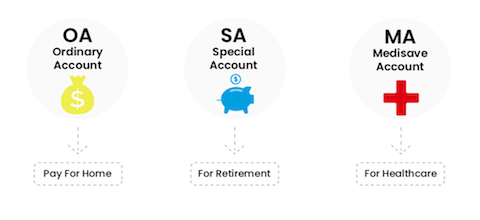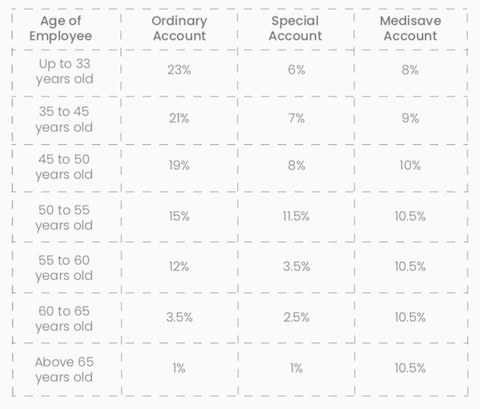In previous post we discussed about how much is CPF contribution for Singaporean and Permanent Residences (PRs) need to pay. In this post, we will talk about Central Provident Fund (CPF) accounts, the usage, and how much goes into each account.
Central Provident Fund (CPF) is a mandatory savings scheme funded by contributions from employers and employees. CPF is functioned as a tool to ensure social security. That means, it ensures that Singaporeans have enough money for their retirement days, to pay their medical bills, and to buy a home with. For this purpose, it becomes mandatory for every Singaporean and PR workers to put away some percentages of their monthly income in their CPF accounts.
CPF Accounts
All Singaporeans and PRs have the following CPF accounts which will be opened for several purposes.

Ordinary Account (OA)
The first one is Ordinary Account (OA) which can be used for higher education for you or a family member’s tuition fees if taking a full-time subsidised diploma or degree course at local universities, polytechnics or ITEs.
It can be used for housing and investment as well. You can use the money in your OA to pay for part of your property, subject to withdrawal limits and the compulsory cash portion that must be paid. You can also use the money in your OA to make your monthly home loan repayments. The amount left from OA will be used for retirement.
Special Account (SA)
The CPF in SA can be used for investment and to be saved for retirement. For investment such as shares, Unit Trusts, investment-linked insurance, Singapore Government Bonds and ETFs.
Medisave Account (MA)
Medisave account will be used for healthcare such as hospitalisation and other approved medical expenses. It also used for Medishield/ Integrated Shield plans (medical insurance), which is highly recommended if you can afford it.
Retirement Account (RA)
The left amount of OA and the amount in SA will be merged to form RA which contain retirement savings. Singaporeans and PRs will only get RA after they turn 55.
CPF Monthly Allocation Rates
Once worker’s CPF is paid, it is divided into several accounts in the certain percentage for each account. The following table shows the percentage of payment that goes into each account.

From the table we can see that as we grow older, the percentage of Medisave get higher while the percentage for Ordinary account get lesser. Presumably, when we are young and strong, we are more likely to use OA money for housing than to fall ill. Then, when you grow older, the allocation for SA will get higher to prepare your retirement saving.
However, once you turn 55, although your Medisave rate remain high, your OA and SA contribution will fall because presumably you already accumulated enough for your retirement.


